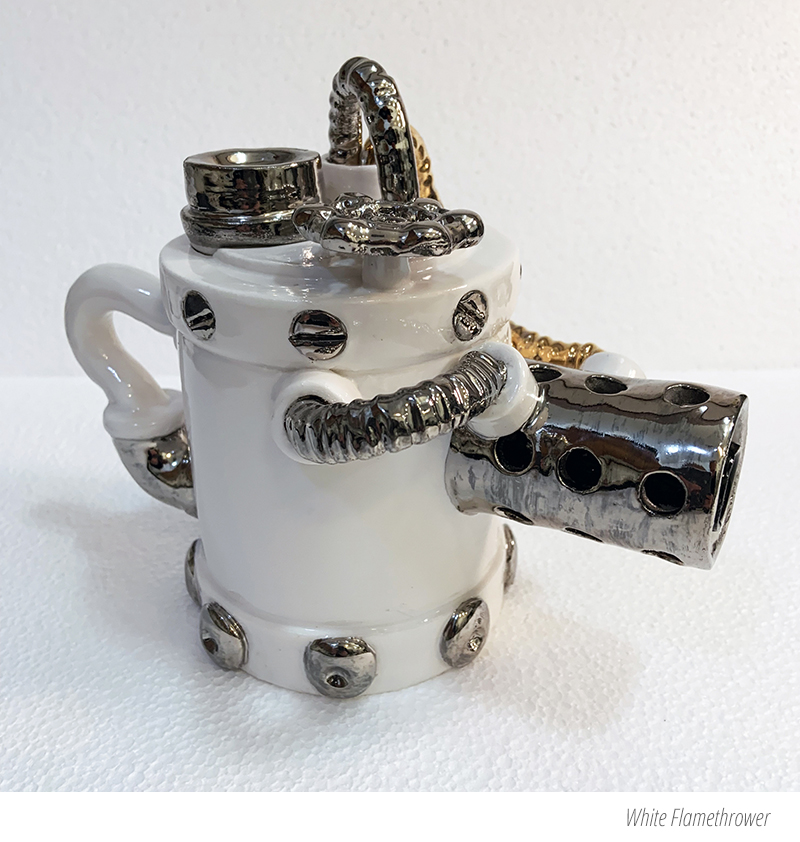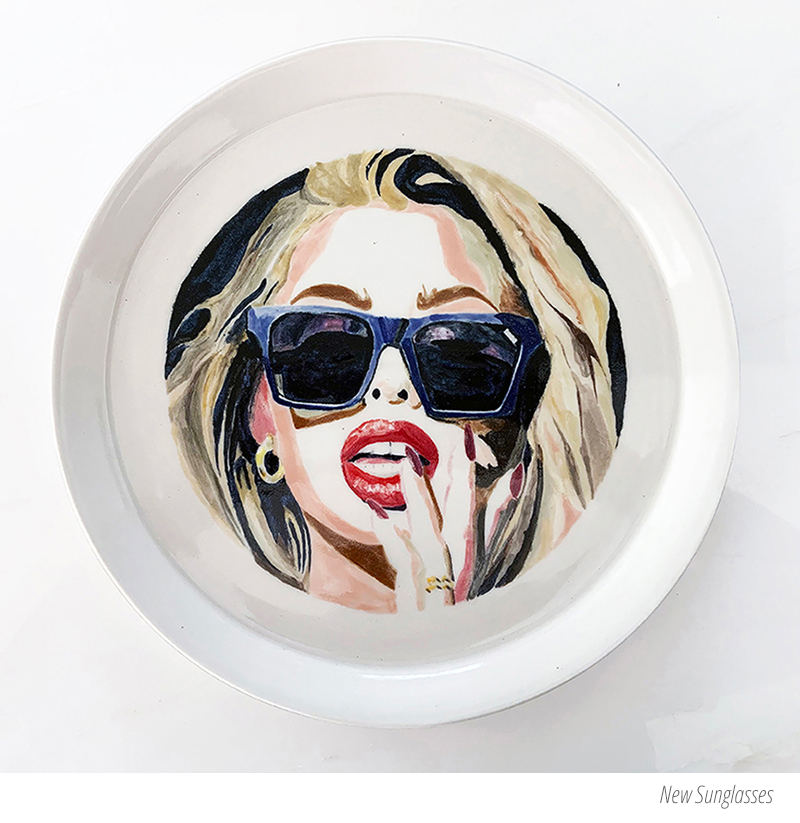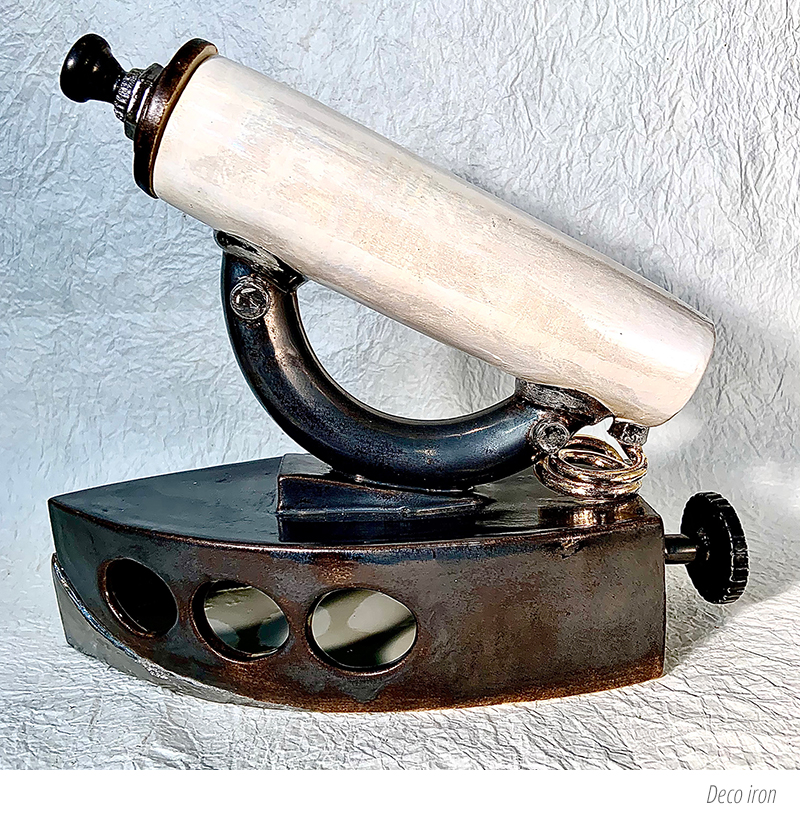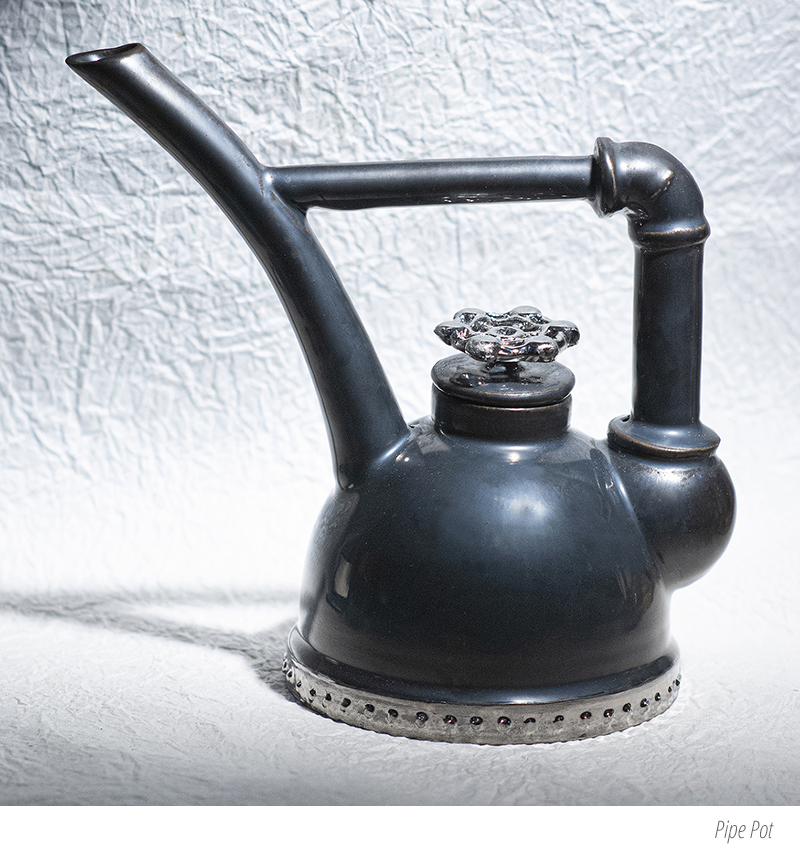
How did you decide to become a ceramic artist?
I never decided to become a ceramic artist.
Ceramics chose me.
You have studied abstract painting and note that you have been most influenced by artists who worked in the style of abstract expressionism. How and why did you move into ceramics? What prompted the change?
I did my Master’s at Pratt Institute. And there was George McNeil. Living legend. Leading member of the American Abstract Artists. An important American abstract expressionist. Student of Hans Hoffman. Showed at the Whitney and galleries all over Manhattan. Wonderful art historian. But his drawing classes confused me. What was the idea? What was he trying to say? But he showed me Picasso ceramics. (He studied under cubists.) The marriage of painting and ceramics. I’m in!

I believe pottery is the bond between the earth, art, and utility and serves as our emotional connection to our environment
Did you have a mentor when you were growing up? How about in your development as an artist?
When I was 17, my sister Sandy gave me a canvas, brushes and a set of oil paint. She said “do something.” She was my first mentor. She still is.
As an artist, I was mentored by Neo-Plasticist Ilya Bolotowsky and sculptor Ibram Lassaw. And by Howard Boesendahl. An amazing painter. Unique technique. Inventive. Exciting. Innovative. Spectacular color palette and design. An artist with big ideas.
What influences and inspires you the most in your creation? How would you describe your current body of work?
I consider my work eclectic and eccentric. I’m inspired by human emotion. Human foibles. Culture. Environment. Design. Past experiences. Utilitarian objects. Great artists. Great art movements. Beauty.

The demand is the motivation. The reward is simply the work. Creating, executing, and exhibiting
In what ways does being a ceramic artist differ from working in other creative disciplines?
I started life as a painter and was mentored by Ilya Bolotowsky and Ibram Lassaw. I worked with notables such as Willem DeKoonig, Jasper Johns, Roy Lichtenstein, Robert Dash, Alphonso Ossorio and Larry Rivers. I worked as a curator at The Parrish Museum in Southampton, The Guild Hall Museum in Easthampton, The Metropolitan Museum/Queens Museum and lectured at the Cloisters. And worked closely with Victor D’Amico on the “Barge” for the Museum of Modern Art.
I started making pottery when taking my Master’s degree in painting at Pratt Institute. My friends were potters. They got me into the “mud”. Little did I know that pottery would turn out to be my passion. Working in dimension was the turning point for me.

What are the main materials and ceramic techniques that you use?
I’m partial to cone 5 porcelain. But occasionally I work with B-Mix especially on tall pieces. B-Mix has more body and stiffness than porcelain which makes it easier to build large forms.
Do you have a favorite form? Why does form by itself play such an important role in your work?
I love heart-shaped forms. Wide, billowy at the top. Tapering to
a narrow foot. But I have a soft spot for “moon jars”. Large, ball-shaped, round pieces with a small opening on top and flared foot for support.
What emotional states do you express through visual representations?
I believe pottery is the bond between the earth, art, and utility and serves as our emotional connection to our environment. As an advertising Executive Creative Director, I always look for the “Big Idea”. The big idea must have an interesting story to tell and be able to connect and effect the observer. Make me feel something!
You live and work in Scottsdale, one of the recognized centers of contemporary art in the United States. How would you characterize its artistic landscape? Does the artistic environment around you help you to create?
I have been fortunate to meet many talented potters, painters, graphic artists, and sculptors since I moved from New York City to Scottsdale.
ASU has a fine collection of pottery. And in galleries, studios and workshops, artists are developing new and interesting techniques and concepts.
You have worked in advertising and teaching for a long time. Have you been able to combine your pedagogical, creative and leadership activities in advertising with your ceramics practice?
As an advertising Creative Director, I worked on national and global fashion/beauty accounts. One day I drew a close-up of a model on a plate
I had thrown. Blue eyes looking straight ahead. Golden hair tumbling. Makeup defining facial features. And luscious red lips. Oh, those lips! The focus was the middle of the plate. Such was the birth of an idea for me. Fashion Plates. Fashion Plates are fashionable plates made for fashionable people.
Fashion Plates are hand thrown plates, bisqued and then hand painted with underglazes. They are then sprayed with a clear glaze and fired to cone 5, about 2,180˚.
What motivates you as an artist? Do you think that ceramics is a suitable medium for young artists?
I’m often asked what motivates me as an artist. Motivation does not create art. Creativity is natural. It’s a burning desire to take a thought, an idea and give it dimension.
How do you view the relationship between reward and demand? What do you find most rewarding at this job?
The demand is the motivation. The reward is simply the work. Creating, executing, and exhibiting.
What projects are you currently developing and what are your future plans?
I’m currently working on a project creating Canteens. Living in Arizona, there’s a real sense of our past. Frontier culture. Rodeos. Horses. Saddles. And yes, canteens. Old canteens are in antique stores, thrift shops and in auctions. They’re used as ornaments in restaurants, hotels, and homes. Canteens are a reminder of how precious water is in Arizona. What water means to our survival and our environment. So, to acknowledge our culture, I’ve created my image of the modern canteen. You certainly won’t see them in a saddlebag, on the range or around a campfire. But welcome to the new West.


